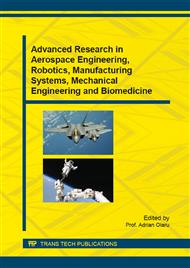p.92
p.99
p.104
p.110
p.117
p.122
p.128
p.133
p.145
The Effects Produced by a Butterfly Valve in a Hydraulic Closed Circuit
Abstract:
The paper presents the operation of a hydraulic closed circuit equipped with a butterfly valve which can close with a step of 10o. Using four pressure transducers and one temperature transducer, the authors determined the volumetric flow rate, the average water velocity and the local pressure loss in the butterfly valve, the flow coefficient Kv and also the incipient cavitation coefficient. Recommendations for the disposal of the butterfly valve are made and conclusions are obtained regarding the range of opening degrees in which the butterfly valve is better to be used.
Info:
Periodical:
Pages:
117-121
Citation:
Online since:
November 2015
Authors:
Price:
Сopyright:
© 2015 Trans Tech Publications Ltd. All Rights Reserved
Share:
Citation:


